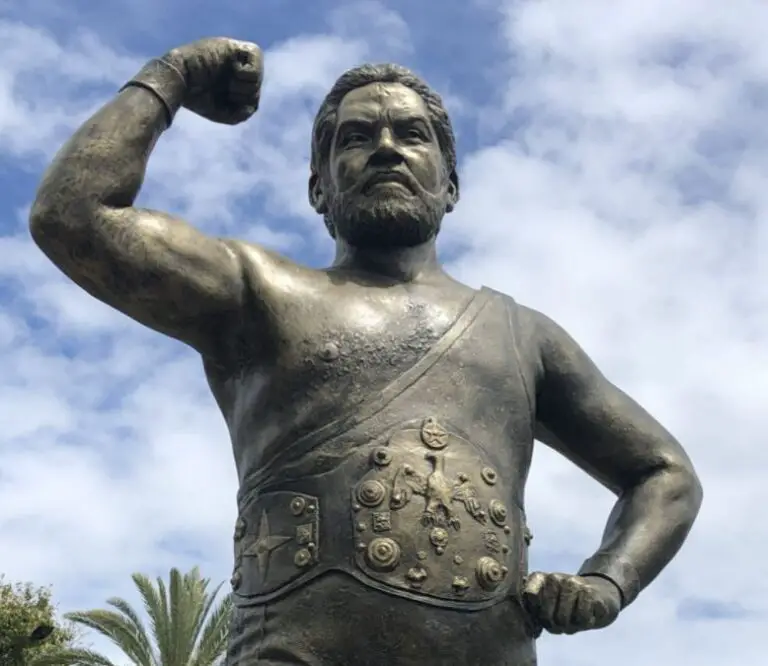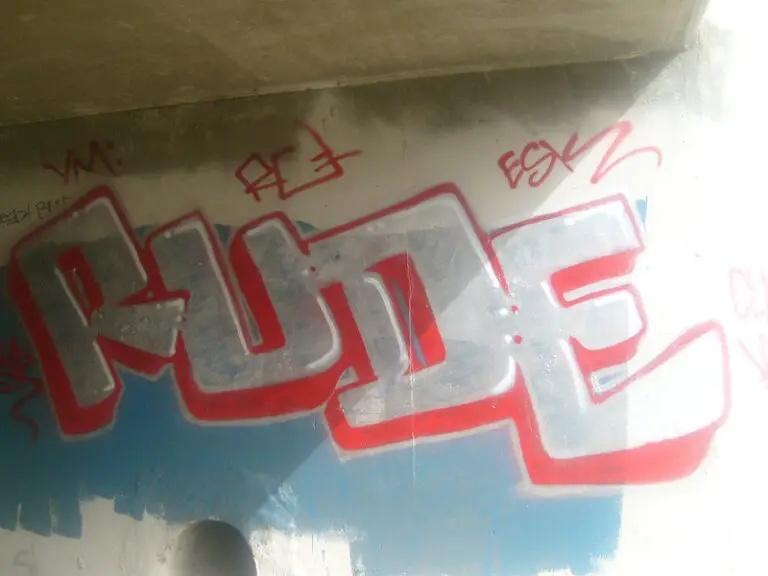The Dominican Republic Flag Origin
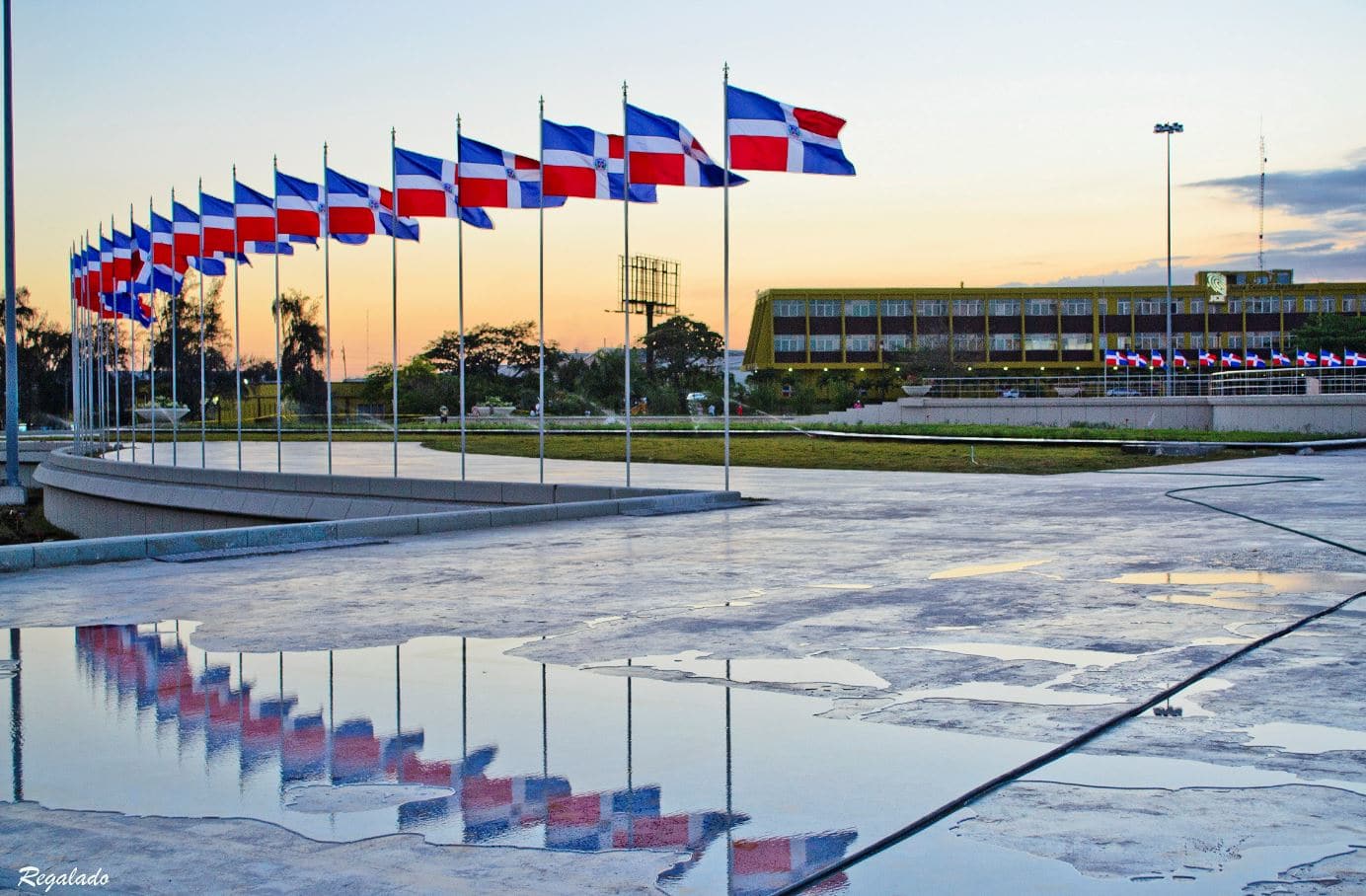
Contents
The Dominican Republic Flag
The Dominican flag has inspiration referring to the French flag in terms of colors, however, the original design was conceived by Juan Pablo Duarte. María Concepción Bona and María Trinidad Sánchez materialized the flag, this is how the first Dominican flag was created.
The flag of the Dominican Republic is the largest symbol of representation of the country, next to the national emblem and the national anthem has the category of national symbols.
According to the Constitution, article 31 and 32, the flag in its center has a cross that extends towards the edges and divide the flag into four equal rectangles: those above are blue and red, and those below are red and blue.
The coat of arms of the Dominican Republic is placed in the center of the flag.
Origins of the Dominican Republic flag
The origin of the flag of the Dominican Republic is found in the French flag, not exactly because of the brief period in which we were a French colony, but because of the influence of the French Revolution on the independence of Latin America.
We owe His conception to Juan Pablo Duarte, while the Confection is by María Concepción Bona and María Trinidad Sánchez. unlike the Dominican shield, the flag has not undergone so many modifications.
When was the Dominican Republic flag created?
The original design of the flag was made by Juan Pablo Duarte, who was the first to distribute the colors, the Trinidadians, which was an association designed by Juan Pablo Duarte, approved the making of the flag on June 16, 1838, the flag was first waved on February 27, 1844.
Duarte placed a blue stripe on the top edge of the flag and a red stripe on the bottom, placing the white cross in the center. That distribution of colors was changed so that the red and blue colors alternated as they do today, this is the Second National Flag.
What does the Dominican flag stand for?
To Juan Pablo Duarte, we owe also the symbolism of the colors of the flag who described it in the following way:
Ultramarine Blue: Represents the sky that covers the Homeland, that God protects the Dominican nation and the ideals of the progress of the Dominicans.
Red Vermilion: Represents the bloodshed in battle by the compatriots to achieve independence.
White: Represents the symbol of the struggle of our compatriots to bequeath us peace and a free homeland.
Suitable uses of the Dominican Republic flag
Many Dominicans ignore the correct uses of patriotic symbols, with the national flag being one of the most important. Because of the importance that this symbol of the homeland is exhibited appropriately and proudly by all Dominicans.
Both on August 16 and February 27, and on other important historical dates; Below, are some tips of the standards for its use, to display with dignity and pride the flag in public places and our homes, its meaning of deep identification with our country.
What is special about the Dominican Republic flag?
The flag of the Dominican Republic has the distinction of being the only one in the world that has an open bible in the center.
Dominican flag coat of arms
The Dominican shield has been changed on many occasions. In the country’s history, at least fourteen coats of arms are registered, until they reach what is known today.
The first shield used as a symbol in the first battle of the War of Independence showed a similar resemblance to the original coat of arms of the Republic of Haiti. In this shield did not appear the words God, Homeland, and Freedom.
The second, which underwent a substantial modification, was drawn by the Constitution of November 1844, in its article number 195.
It was included there to the name of the Dominican Republic, positioned in the center, a tape with the phrase: God, Homeland, and Freedom. In this shield, the two guns that serve as the base for the shield of the Haitian flag disappear.
The only similarities between the last shield and the first one are the laurels that surround it, The Book of the Gospel in the center, the flag and its colors distributed throughout its central body and a frigid cap located just below the Book of Gospels.
In the center of the shield is read in the Gospel of John, Chapter 8, Verse 32, which says “You will know the truth and the truth will set you free.”
What does the Dominican Republic coat of arms mean?
The shield of the Dominican Republic in the center has the classic shield with a tip at the bottom and closed at the top of a triangle with a tip below, with the national colors; to the center of the shield 6 flagpole antlers, 4 with flags collected at the bottom, which hold the Bible open and a cross on top.
On the left side is a laurel bouquet (immortality) and on the right is a palm branch (freedom), all this is joined by a red ribbon that symbolizes Glory.
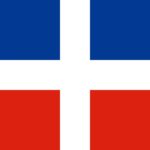
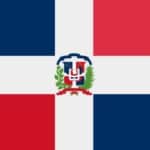
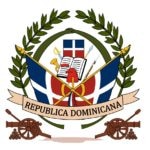
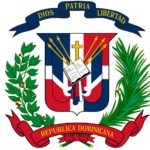
From left to right: the first Dominican flag, the current Dominican flag, the first Dominican coat of arms, the current Dominican coat of arms.
Interesting facts about the Dominican flag
- Daily, the national flag will rise from sunrise to sunset, on working days in all government institutions, decentralized state agencies, and in municipal, judicial and other state offices. “(Article 3, Law 360)
- In the fortresses, detachments, barracks, and premises of the Armed Forces and the National Police, the national flag shall be threaded by the military and police regulations issued for that purpose by the Executive Power. ” (Paragraph 1, Article 3, Law 360)
- The national flag of official use will be of three types, in relation to its dimensions: The smallest, six feet long by four wide; the medium ones, ten feet long by six wide, and the largest ones, between two-and-a-half meters and eight and a half meters long, between four and four meters and a quarter meters wide. “(Article 6, Law 360)
- Any private institution can have its distinctive flag, which can be freely installed in its establishment, but if at the same time the national flag is raised, it cannot be of higher size or placed higher than it. (Article 9, Law 360)
- Any national flag that is deteriorated, broken, discolored or in poor condition must be incinerated, observing for that solemnity and respect. (Article 11, Law 360)
- It is forbidden to cut into pieces, destroy, throw in the trash or in any other way have the national flag. (Article 12, Law 360).

